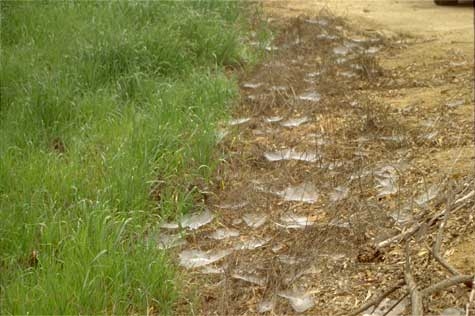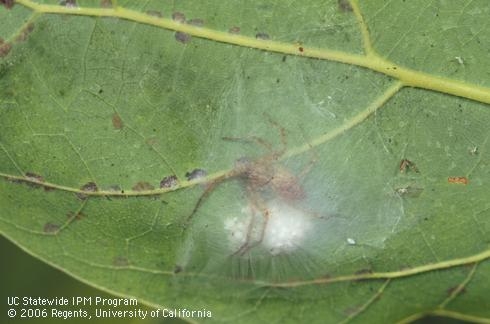Are you noticing an abundance of cobwebs outside, on plants, fences, homes, or outdoor furniture?

While many people fear spiders or dislike their cobwebs, most spiders are beneficial to have around– even in the home! Spiders are predators of many insect pests and rarely cause harm to people. The only medically significant spiders in California are brown and black widows. While these spiders have the potential to cause harm, it is rare that they will bite, even in areas where they are very common. Like most spiders, they prefer to stay hidden and avoid people.
Some common web-spinning spiders you might encounter outdoors include:
- Funnel weavers: feed during the day and night near the ground in most types of vegetation, including low-growing plants and trees. Spin funnel-shaped webs, often with several-inch-wide, flat extension covering plants or soil.
- Sac spiders: spin silken tubes or sacs under bark, among leaves, and in low plants or on the ground, where they hide during the day or retreat after hunting. They are typically nocturnal, medium-sized, pale spiders with few markings.
 Female sac spider or twoclawed hunting spider with her eggs. Photo by David Rosen.
Female sac spider or twoclawed hunting spider with her eggs. Photo by David Rosen. - Garden spiders: feed on insects that fly, fall, or are blown into their web. Elaborate silken webs are spun in concentric circles.
- Dwarf spiders: prey on insects that fall, walk, or land in their web. They are diurnal (day active) spiders found in the plant canopy and among litter on the ground. Dwarf spiders produce sheetlike webs on the surface of plants or soil.
- Comb-footed spiders: feed on insects that walk or fly into their webs. They almost always are found hanging upside down by their claws in irregularly spun, sticky webs, waiting for prey. Generally they have a soft, round, bulbous abdomen and slender legs without spines.
Unwanted cobwebs can be swept, mopped, hosed, or vacuumed up. Insecticides should not usually be used against spiders outdoors and don't provide good control anyway.
For more information about spiders in and around the home, visit the Pest Notes: Spiders.
